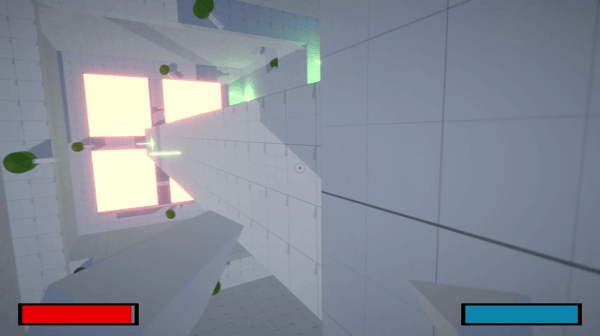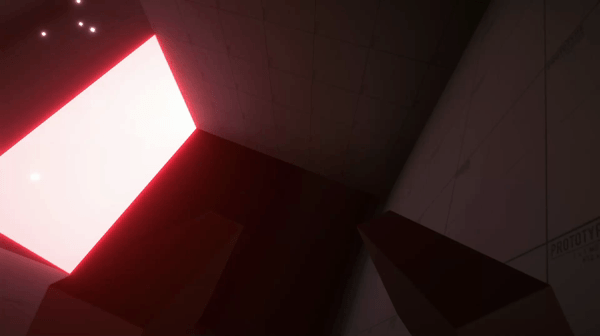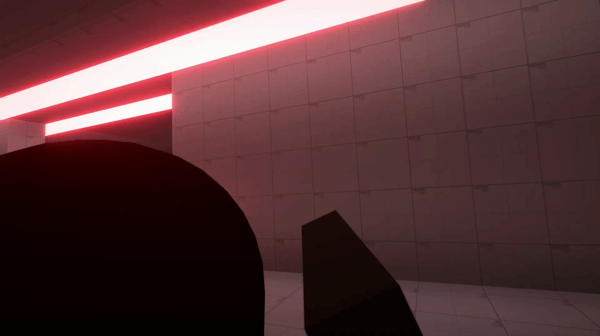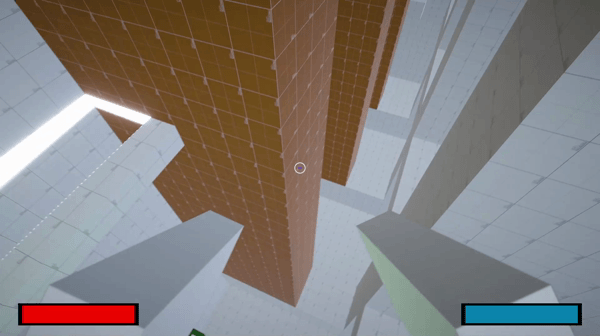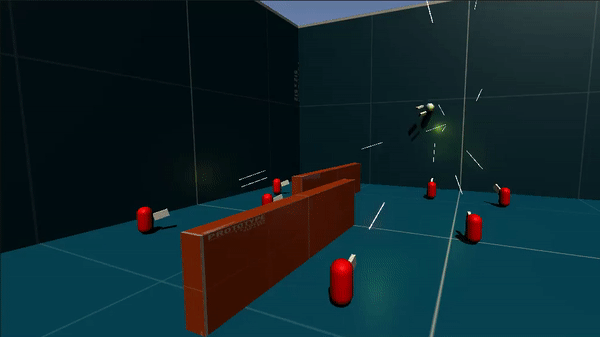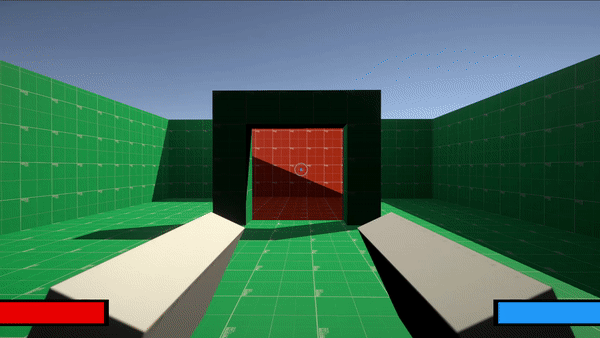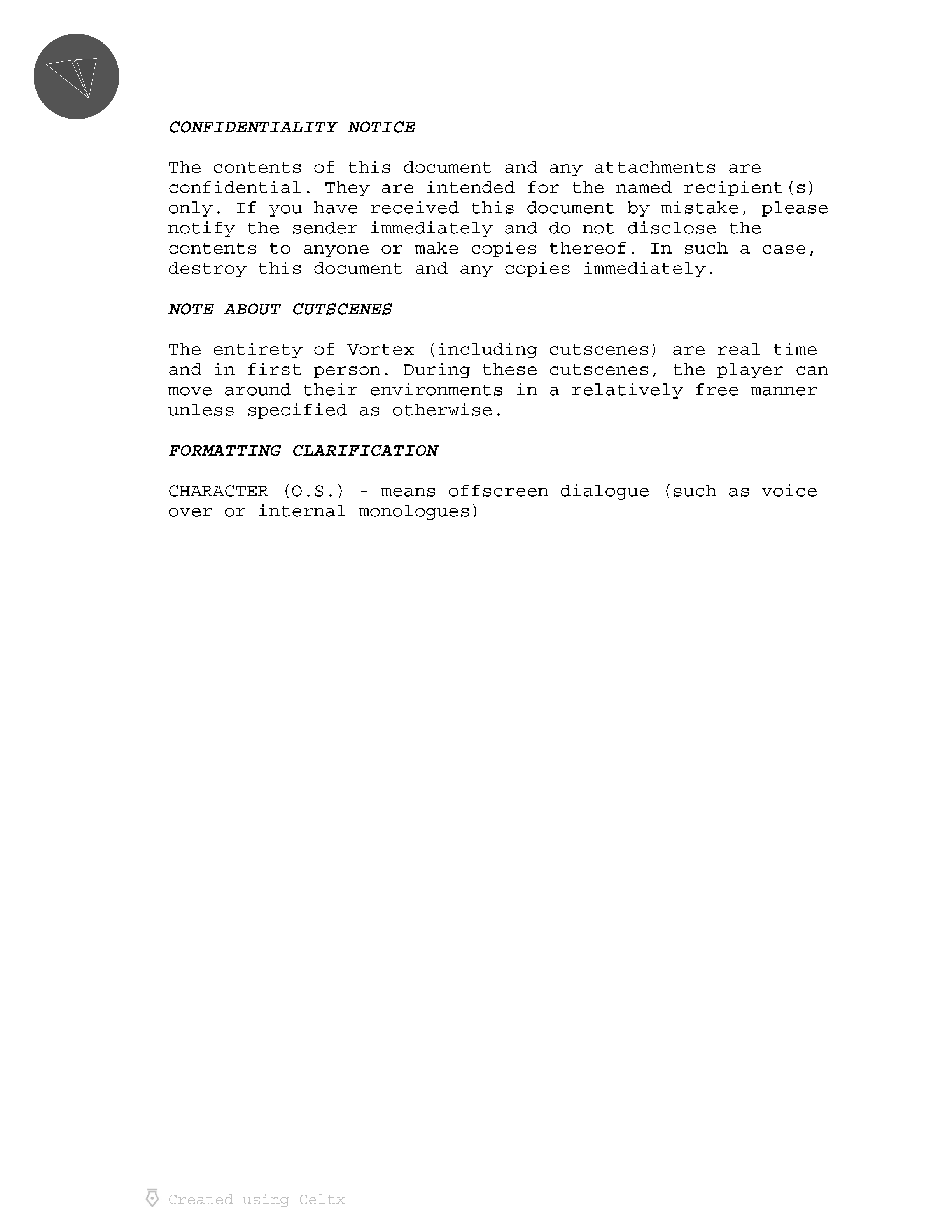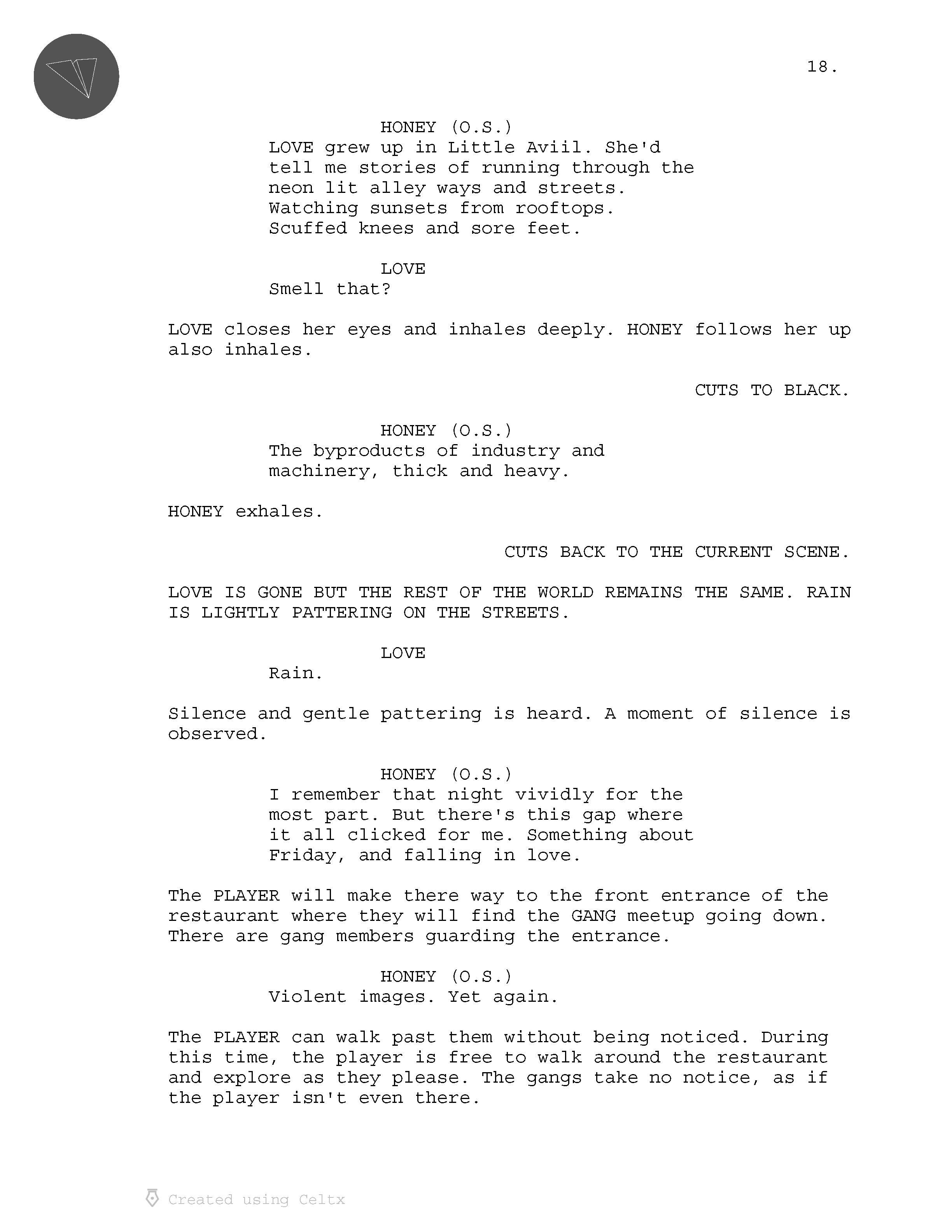Project Breakdown
below you will find a breakdown of my highlighted work on the game. It has been divided into three sections.
Design
Programming
& Narrative
This breakdown is excluding the production and management aspects of my job on the vortex team.
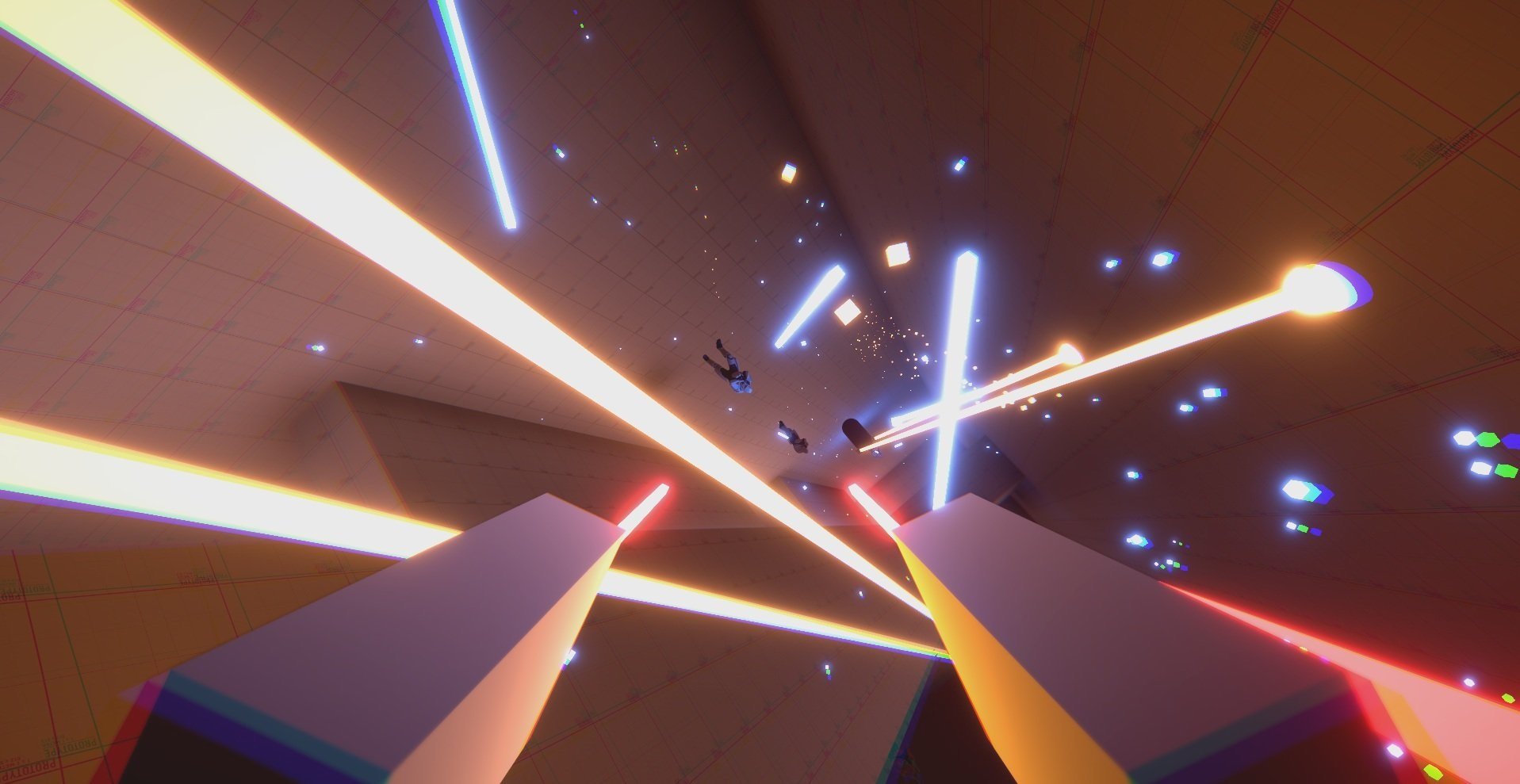
Design
Gameplay Pillars
Movement
Movement is the primary pillar that we utilize to keep our players engaged and on their toes. We achieve this pillar through fast moving projectiles and pinpoint accuracy from the enemies, forcing the player to be consistently on the move to avoid being hit. On top of this, movement has been expanded onto every surface with the game’s primary mechanic, gravity manipulation.
Movement Pillar Examples
-
The key staple of Vortex’s gameplay is the player’s ability to walk on any surface (floor, roof, walls) etc… This allows players to make use of the level’s full vertical capacity in all three dimensions, no longer constraining them to only one plane.
-
Both enemy accuracy and damage is scaled based on the player’s speed. The slower the player is moving, the more damage the player will take when hit and the more accurate enemies aim will be. This is done to reinforce the core idea that one must move in Vortex or die.
Vulnerability
In order to achieve maximum tension, players must always be aware of their own fragility. Mistakes in Vortex are costly to players, and combat has been designed to continually remind players of this vulnerability. This is done to heighten the emotional payoff when players triumph against the odds stacked against them, as we’ve seen in games such as Hotline Miami and Dark Souls.
Vulnerability Pillar Examples
-
Both players and (most) enemies within Vortex can be described as glass cannons. Player and enemy weaponry will tear through each others’ health pools rapidly, ensuring that each combat encounter is not only lethal but forces players to be be pushed to their limits. Simple slip ups can fast track the player an untimely demise. That being said, Vortex has been designed to be challenging but not unfair. Flowstate is our goal, and from playtests it seems that flowstate is what we have achieved in our combat.
-
A triumphant protagonist is not the same thing as an all-powerful one. Unkillable enemies present a unique combative challenge for the player to work around as opposed to overcome. These enemies are designed to serve as a constant threat to keep the player’s on their toes when deployed. Take Sasha for instance, our bipedal mech / tank featured above.
Intelligent Play
Everything in Vortex is built around what I call intelligent play. This design philosophy was created to address the issues found within the shooter genre where players' intellectual capacity is often overlooked and underscored by the genres intense focus on testing physical / reactionary prowess. As a result of this, player’s don’t feel smart in a lot of games. Intelligent play is our solution.
Intelligent Play Examples
-
Want to use a different gun? Pick up a weapon from a downed enemy. The traditional weapon swapping arsenal found within the arena shooter genre has been removed in favor of overpowered pickups from downed enemies that can be used for a brief period of time. This was done to maintain a sense of realism and resourcefulness when it came to combat, and reinforced the concept of intelligent play and the utilization of the tools around you.
-
Using enemies as mobile cover allows players to have some respite from combat while still effectively engaging enemies. While using enemies in this fashion the player receives twice as much health as they normally do per kill. Intelligent play is about being smart and resourceful, utilizing external resources to give you the upper hand in combat. We believe that resourcefulness is what makes a truly terrifying foe.
Playtesting

Programming
Selected Work
Gravity Based Movement
The most notable mechanic of Vortex is the gravity swapping ability. The original prototype for Vortex was in Unreal but upon deciding to transition to Unity it took me two weeks to reimplement this mechanic.
Enemy Behaviors
All enemies were designed, prototyped, and iterated on by yours truly! This work covered everything from the enemy’s individual behaviors to their group dynamics. Whether it be the shield enemy’s ranged laser beams or the sheer suppressive firepower of the groups of standard enemies, all are designed to work as a cohesive team to apply pressure onto the player in different ways. Enemies usually were prototyped within less than a day to a week.
Non-Euclidean Geometry
Non-Euclidean geometry is an essential tool for the narrative toolkit for Vortex. This mechanic was built as a tool to artistically portray surrealism and elements of dissociative mental health disorders. Prototyped within two weeks.
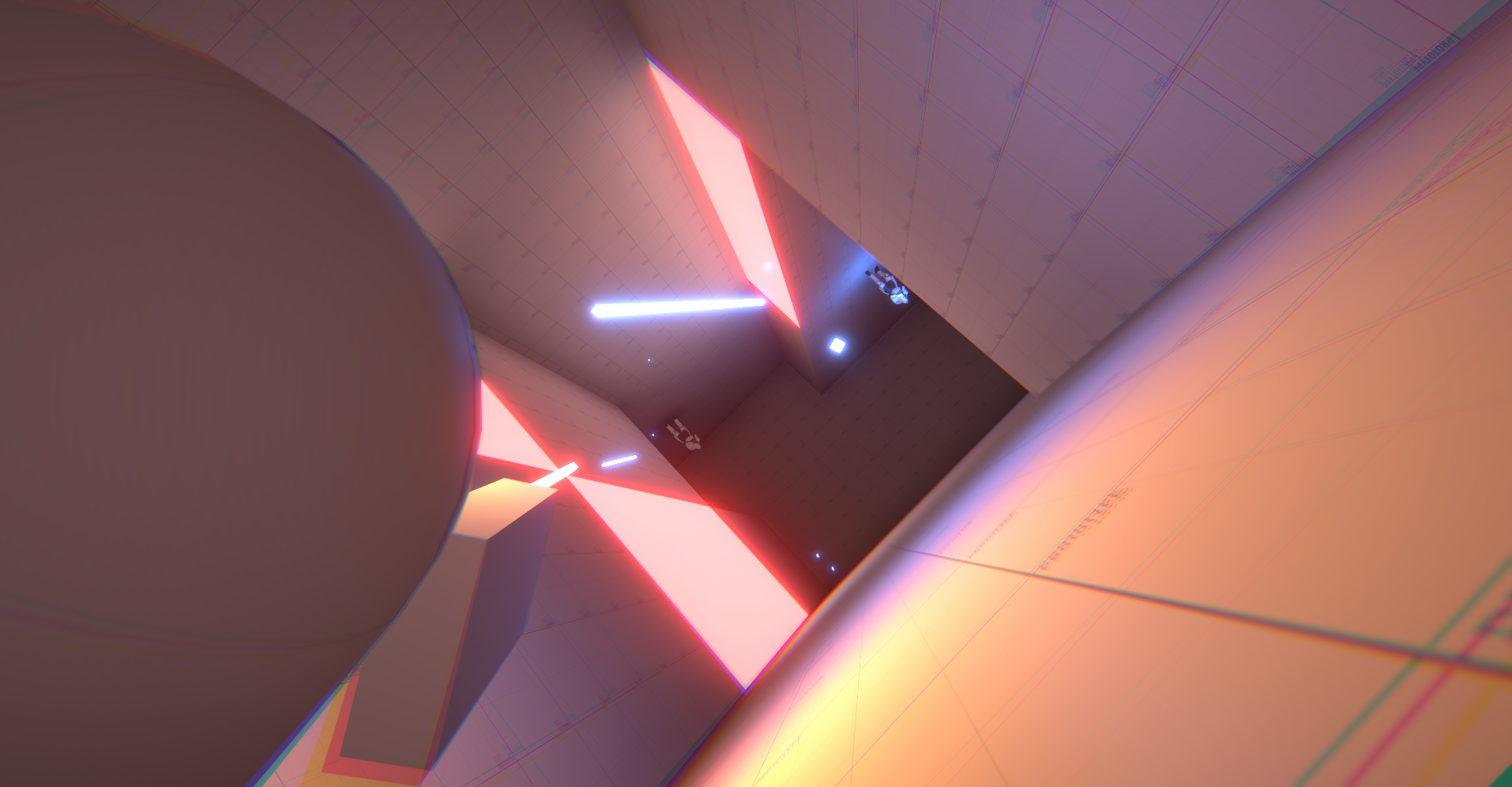
Narrative
Story and Direction
exploring Mental Health
From its conception, Vortex set out to explore the mental health of a protagonist engaging in violence that would normally be glamourized by other media. To do this, we ground our work in psychological research and utilize techniques from works of film surrealism by directors such as David Lynch and Ingmar Bergman. By applying this surrealistic lens to our exploration of mental health and violence, we can create a cohesive ludo-narrative experience that accurately portrays mental health issues in a respectful and humanizing manner.
Examining Violence
Violence in media and especially games is something that is constantly overlooked and glamourized. It is often portrayed as black and white, ethical within the realms of the story and never pursued further. Heroes stay heroes and we never are treated to the full repercussions of violent actions. Our goal with Vortex was to craft a story that challenges this convention by looking at a more realistic and grounded portrayal of violence. We are working to craft an experience that explores the ethics, morals, and long lasting ramifications of violence on not only those directly involved but those who were affected indirectly as well.

